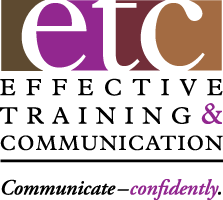Some of you have begun thinking more about the words you use in routine workplace writing. If you identified lots of word choice habits, also good. If you asked yourself why you used a particular word or phrase and weren’t happy with your answers, then get ready to rock & roll. Many of you will benefit from some lessons learned on the journey towards more reader-centric word choices.
Go back to Square One
1. The Reader Analysis data you gather early on should tell you a lot about what type of words would be most appropriate for a given document’s readers and outcomes. Consider their educational levels, organizational levels, backgrounds and culture when choosing the Best Words you can think of, not just the first words you think of or your usual words.
2. If you also determined the appropriate Tone of your message, you realize how your words, structure and syntax can influence how your message ‘feels’ to your readers and the emotional or connotative reactions they might have to your words choices.
3. Let those decisions impact your word choices. Every word you say should be on purpose and for a purpose. Go beyond the ‘first one/usual one’ approach to the Best one you can find that consistently and clearly conveys your intended meaning to your specific readers. And it’s not that long a trip.
Clarity Rules
You’re probably expecting me to grind my axe about brevity here. Correct – Less is More in workplace writing. Brevity is very important, but Clarity always beats Brevity. If you have a choice between a shorter or more conversational word or phrase and a longer, more formal word or phrase … and the shorter option is just as clear … or clearer … go with it. But, never sacrifice Clarity just to achieve Brevity. Better to use a longer word or more words to more clearly communicate your message.
That said, ‘telephone’ becomes ‘phone’, ‘automobile’ becomes ‘car’, ‘compensate’ becomes ‘pay’, ‘finalize’ becomes ‘finish’, ‘approximately’ becomes ‘about’ and ‘modification’ becomes ‘change’. Turn ‘commence’ into ‘begin’, ‘utilize’ into ‘use’ and ‘anticipate’ into ‘expect’.
Instead of adding four words with ‘to the extent that’, only add one with ‘if’. Instead of ‘each and every one of you’, save three words with ‘all of you’ or ‘each of you’. No need to say ‘ … a check in the amount of $2,300 … ’ when ‘ … for $2,300’ works better. Is ‘at this present point in time …’ any clearer than ‘ … now …’? No! Do we really add any value by saying ‘… state of Ohio … ‘ instead of simply ‘ … Ohio … ‘? No! Avoid redundancy with ‘consensus of opinion’ when ‘consensus’ means the same thing. Why ever say ‘red in color’ when all we need is ‘red’.
Tone of Words
Can you hear and ‘feel’ a difference in tone between ‘in lieu of’ and ‘instead of’, between ‘I am in receipt of’ and ‘I received’ or ‘’pursuant to our telephone conversation’ and ‘as we discussed’? I can. Your readers certainly can.
And if you were thinking that the same best practices apply to the words you say in your presentations and sales pitches, you’re absolutely right. Word choices impact your audiences and outcomes just like they do with written communication.
Your take-aways here – use fewer better words. Make every word count. Strive for using the best words. Your result – Clarity and Brevity will both rule in your workplace writing … and presenting.
